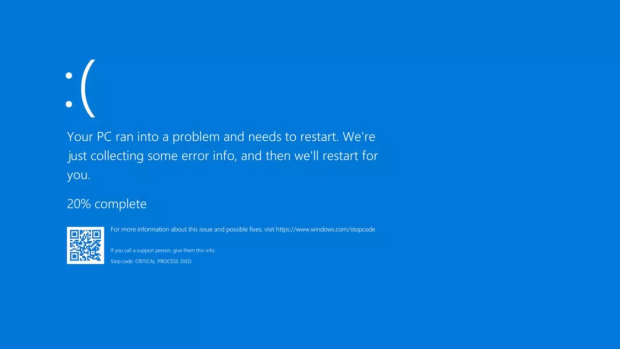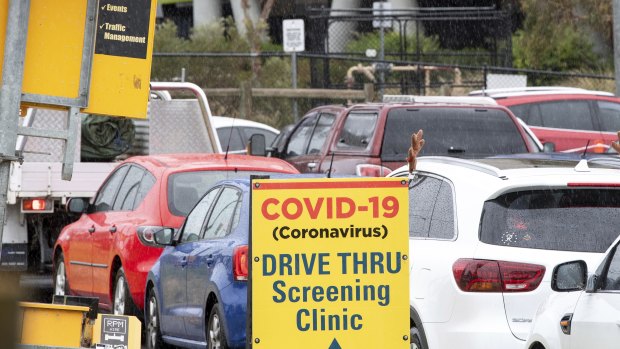Opinion
You want cheap stuff? You’ll need to accept more pain like the CrowdStrike crash
Shane Wright
Senior economics correspondentThe appearance of the blue screen of death across the world’s laptops and PCs last Friday will have caused billions of dollars worth of problems.
From the extra costs for airlines accommodating passengers unable to catch their flights to the lost orders for chips with extra chicken salt at the local burger bar, the CrowdStrike shutdown was a massive financial headache.

More blue screens of death – or worse – may be on the way due to long, interconnected supply chains that have made our lives better over recent years.
While there will be inquiries that will explain what ultimately happened at CrowdStrike, what is essential to understand is that these types of events are becoming more prevalent.
I’m not talking about cyber issues (from hacking to stuff-ups). I’m talking about how our global supply chains, as they have become more extended and important, are now more prone to breaking down.
And that is putting our economies, our way of life, at a risk that no politician or economist can quite grasp.
The CrowdStrike issue was the third supply chain issue to roil the global economy in the past 15 years. The first was the global financial crisis of 2008-09.
Anyone who promises you a simple solution to the issues exposed by the GFC, COVID and CrowdStrike is a charlatan.
Most people think of that period as the detonation of the US property market as banks willingly lent money to people who could never repay their mortgage.
Those loans, and the way the global financial system was connected at that point, were central to the GFC. But the way the financial system came to a halt, the reason central banks slashed interest rates to (then) record lows, and why governments gave money to consumers in a bid to get them spending were all about a supply crisis.
A lack of supply of credit.
Banks and other financial institutions stopped lending money among themselves, which meant money stopped flowing among consumers. Without money flowing between banks and consumers, the global economy came to a halt.
As the then Reserve Bank governor, Glenn Stevens, noted in late 2008, there was a real risk that even with low interest rates “neither the demand for credit nor the willingness of banks to supply it” may get back to normal.
Financial crises are unlike your run-of-the-mill recession. Their impacts linger and cause cascading problems. The fact central banks had interest rates at extraordinarily low levels before the COVID pandemic was a direct result of the fallout caused by the GFC.
Which brings us to the second supply problem.
The COVID pandemic was a health crisis, but it exposed the dependence of the global economy on long, interconnected supply chains.
It started first with the shortage of PPE. It morphed into the inability to get a whole range of goods – from jigsaws to parts for your car – moving freely around the world.
Ultimately, the pandemic became a supply issue of goods. It begat a supply issue in which businesses couldn’t find staff.
Throw in the energy supply crisis caused by Vladimir Putin’s invasion of Ukraine, and we got a perfect inflationary storm made worse by the ultra-low interest rates and money creation used by central banks to safeguard the global economy.
The tech outage last week was also a supply problem.
CrowdStrike supplied the world a valuable service – protection from computer viruses and hackers.
When it couldn’t supply that service, the planes stopped flying, the checkouts stopped checking out and TV stations were forced by digital shutdowns to operate as they did back in the 1970s.

The COVID pandemic revealed a series of supply problems, from public health testing to rolls of loo paper.Credit: Penny Stephens
Just like the GFC, before which we didn’t understand the connections between global finance, and just like COVID, when we assumed the local supermarket would always have an ample supply of loo rolls, the CrowdStrike problem came like a bolt of lightning.
Most of us had never even heard of CrowdStrike until last week. Now we realise our entire way of working depends on a few technicians in Austin, Texas.
The world, for all its problems, has never been richer than it is right now. From technological breakthroughs to huge advances in economic policy, the world’s residents are wealthier than at any time in human history.
Our interconnected supply chains – from credit to virus protection – have been a key part of that.
But the key feature of those supply chains, how they deliver valuable goods and services at a relatively low price, is also a key bug. One problem anywhere, be it in suburban Miami or a Chinese wet market, and the whole way the global economy works can fall apart.
While academics and politicians and business leaders talk about the “resilience” of supply chains and ability to provide services, these three major events prove otherwise.
Anyone who promises you a simple solution to the issues exposed by the GFC, COVID and CrowdStrike is a charlatan.
The improvements to the global economy due to extended supply chains have been immense. They’ve made our lives better, easier and cheaper. But the costs – be it those blue screens of death or the mad rush for a COVID test – have been ignored.
Whatever the solution to reinforcing our supply chains, it is going to cost money and hit productivity. That has ramifications for businesses and central banks that they clearly have not yet considered.
Voters and consumers will have to be educated that the systems that deliver them cheap clothes or streaming services at the touch of a button may have to be more expensive.
The GFC, COVID and now CrowdStrike are symptoms of a world economic system getting more complex. Our political and economic leaders have to be upfront about what that truly means.
Otherwise, the next supply shock may be even worse.
Shane Wright is a senior economics correspondent.
The Opinion newsletter is a weekly wrap of views that will challenge, champion and inform your own. Sign up here.